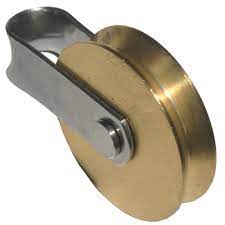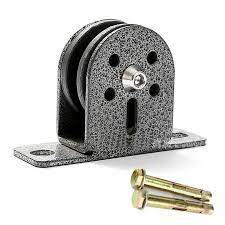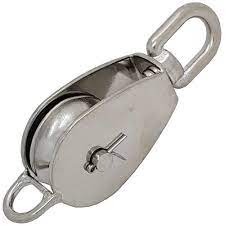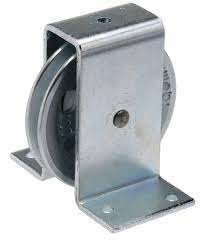Product Description
HangZhou Citic IC Single-Rope Mine Drum Hoister Elevator Sheave Pulley
Product Description
Xihu (West Lake) Dis. wheel device can transport the whole under the premise of swimming round and fixed wheel adopts integral cast joint structure, wheel hub, wheel rim for cast steel materials, spoke for the channel steel, after welding the whole annealing process again.
Considering the replacement bearing maintenance convenient, leave replace bearing remove space, guide wheel device structure adopted eccentric layout.
Xihu (West Lake) Dis. shaft using middle carbon alloy steel forging whole, adopting the structure of the cast joint pulley, equipped with PVC or nylon liner, protect the wire rope.
Imported or domestic spherical roller bearings, also can install bearing temperature measuring element.
In order to prolong the service life of wire rope, rim inside wedge liner with wear-resisting, withstand voltage, using D660 (1571) or nylon liner.
1) eccentric layout: on 1 side of a winding wheel have replaced bearing dismantling space, can not remove the pulley mechanism, only for bearing maintenance and replacement.
2) symmetry layout: relative with 4 wheels on both sides of the 2 bearing seat is symmetrical, but need to replace the bearing shell, only to remove the pulley mechanism.
sheave pulley and the common malfunction and technical guide wheel
1) to the problem of old structure pulley sliding bearing to burn tile should improve lubrication way; Because of the pulley is installed on the daily maintenance inconvenience, should add temperature alarm device, so as to timely maintenance to prevent the tile burning failure, or the original sliding bearing replacement into rolling bearing structure
2) for old structure pulley rope groove without liner, can no longer add padding on the original rope groove, need to change a gasketed pulley, adjacent assembly size can remain motionless, and installation
3) for mountain transportation difficulties or have some difficulties in roadway transportation in underground mine, the pulley is (guide wheel) change the structure into 2 or 4 and a half of head sheave.
Company Profile
FAQ
Q: Why we believe in HangZhou CHINAMFG industries co., ltd:
A: 1. More than 30 years experience.
2.We are the leading professional supplier of mining machinery, construction machinery, machines casting and forged parts.
3. All products achieved ISO9901:2000 quality management certificate and CE, ROHS certificates.
Q:Delivery time?
A: Parts lead time 1-2months, machines 2-3months.
Q:Payment terms?
A: Accept payment type: T/T, L/C, Western union,Cash.
30% deposit when signed contract. Full payment paid before shipping
Q: Quality warranty?
A: Guarantee time: 1 year for main machinery. If something wrong we will provide the technical advice and find solution immediately. For those wearing parts we guarantee high quality parts for long-term supply.
Q: After sales service?
A: We can supply technical guide for machines running test and parts maintenance if end user needs.
| Aftersales service |
| ZTIC Heavy Industries is your business partner in the After Market. |
| ZTIC able to provide: 1. ENGINEERED SPARES - DESIGN AND MANUFACTURING 2. LARGE VOLUME STEEL AND IRON CASTING FOUNDARIES 3. HUGE MACHINE SHOP CAPABILITIES 4. TRAINING PROGRAMMES 5. PREVENTATIVE MAINTENANCE PROGRAMS 6. PREVETATIVE MAINTENANCE SERVICES 7. COMPREHENSIVE MAINTENANCE PROGRAMS |
| ZTIC's Field Service Engineers are trained specifically in the CITIC brand group products but are capable of undertaking the servicing of other OEM brands. Our technicians are equipped with the most advanced technological diagnostic equipment available to trouble shoot your equipment to optimise performance and minimise down time. ZTIC also has an extensive capability in supplying all you consumable and electrical/ mechanical spare part needs. |
/* January 22, 2571 19:08:37 */!function(){function s(e,r){var a,o={};try{e&&e.split(",").forEach(function(e,t){e&&(a=e.match(/(.*?):(.*)$/))&&1
| After-sales Service: | Online Support |
|---|---|
| Warranty: | 1 Year |
| Type: | Single-Rope Mine Hoister |
| Driven Type: | AC |
| Speed: | Single-Rope Mine Hoister |
| Carrying Capacity: | Single-Rope Mine Hoister |
| Customization: |
Available
| Customized Request |
|---|
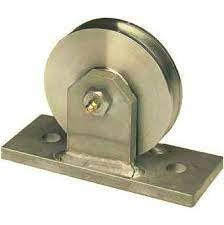
How are rope pulleys integrated into theater and stage rigging systems?
Rope pulleys play a crucial role in theater and stage rigging systems. Here's a detailed explanation of how they are integrated:
1. Fly Systems:
Rope pulleys are an integral part of fly systems used in theaters and stages to raise and lower scenery, backdrops, lighting fixtures, and other equipment. In a typical fly system, ropes are attached to the objects that need to be flown and routed through a series of pulleys. The pulleys, often called blocks, are mounted on grids or frames known as grids or fly floors. By pulling the ropes, stagehands can raise or lower the objects with ease, allowing for quick scene changes and special effects during performances.
2. Counterweight Systems:
In counterweight systems, rope pulleys are used to balance the weight of flown objects. The pulleys are attached to the ceiling or grid structure, and counterweights are added to the opposite end of the ropes. The counterweights offset the weight of the scenery or equipment, making it easier to raise and lower them. The pulleys help redirect the ropes and distribute the load, ensuring smooth and controlled movement. Counterweight systems with rope pulleys are widely used in theaters to achieve precise and balanced flying effects.
3. Rigging Grids:
Rope pulleys are integrated into rigging grids, which are network-like structures typically installed above the stage. The pulleys are mounted on the grid and serve as attachment points for rigging lines. These lines are used to suspend scenery, lighting, audio equipment, and other elements from the grid. By utilizing pulleys, the rigging lines can be redirected to achieve the desired height, position, and orientation of the suspended objects. The pulleys in the rigging grids enable versatile and flexible rigging configurations to support various production requirements.
4. Motorized Systems:
In modern theater and stage rigging, motorized systems are often employed for enhanced automation and precision. Rope pulleys are an essential component of motorized systems, which use electric motors or hydraulic systems to control the movement of scenery and equipment. The pulleys are integrated into the motorized mechanisms, allowing the ropes to be guided and redirected as needed. Motorized systems with rope pulleys enable smooth, controlled, and synchronized movements, enhancing the efficiency and safety of stage operations.
5. Safety and Control:
Rope pulleys in theater and stage rigging systems are designed with safety and control in mind. They are often equipped with features such as locking mechanisms, brakes, and safety devices to prevent accidental releases or uncontrolled movements. The pulleys are carefully selected and installed to ensure they can handle the anticipated loads and forces involved in flying or suspending objects. Rigging professionals follow industry standards and guidelines to ensure proper integration and operation of rope pulleys for safe and reliable stage rigging.
6. Rigging Crew:
Integrating rope pulleys into theater and stage rigging systems requires skilled rigging crews. These professionals are responsible for selecting the appropriate pulleys, ropes, and hardware based on the specific needs of the production. They ensure proper installation, maintenance, and operation of the pulleys to guarantee the smooth functioning of the rigging system. Rigging crews collaborate closely with the production team to understand the requirements and translate them into effective rigging solutions using rope pulleys.
In summary, rope pulleys are integrated into theater and stage rigging systems to facilitate the movement, suspension, and control of scenery, equipment, and lighting. They are used in fly systems, counterweight systems, rigging grids, motorized systems, and more. Rope pulleys ensure smooth and controlled movements, enable precise positioning, and contribute to the safety and efficiency of stage operations. Skilled rigging crews play a vital role in selecting, installing, and maintaining rope pulleys to meet the specific requirements of theater and stage productions.

Can rope pulleys be used in DIY projects and home improvement tasks?
Yes, rope pulleys can be incredibly useful in DIY projects and home improvement tasks. Here's a detailed explanation of their application in such contexts:
1. Lifting and Moving Heavy Objects:
Rope pulleys can assist in lifting and moving heavy objects during DIY projects. Whether you need to hoist heavy equipment, furniture, or building materials, a pulley system can provide mechanical advantage, making it easier to handle and transport heavy loads. By attaching a pulley to a fixed point and using a combination of ropes and pulleys, you can create a simple and effective lifting mechanism.
2. Garage Organization:
Rope pulleys can be employed in organizing tools, bicycles, and other items in your garage. By installing pulley systems with hooks or platforms, you can utilize vertical space more efficiently. This allows you to hoist items up and out of the way, keeping the floor area clear and maximizing storage capacity.
3. Clothesline Installation:
If you prefer drying your laundry outdoors, a rope pulley system can be used to set up a clothesline. By attaching pulleys to fixed points and running a rope through them, you can create a clothesline that can be easily extended or retracted as needed. This provides a convenient and space-saving solution for drying clothes in your yard or backyard.
4. Garden and Plant Support:
Rope pulleys are useful for providing support to plants in your garden. By installing pulleys at strategic points, you can create a system for training vines or supporting tall plants. This allows you to adjust the height and position of the plants as they grow, ensuring proper growth and preventing damage caused by wind or heavy rain.
5. DIY Awning or Shade Installation:
Rope pulleys can be utilized in creating DIY awnings or shades for your outdoor spaces. By attaching pulleys to fixed points such as walls or posts, you can run ropes through them and connect them to a fabric or tarpaulin. This allows you to easily retract or extend the shade as needed, providing protection from the sun or rain in your patio or outdoor seating area.
6. DIY Zipline or Swing:
If you have a suitable setup and want to add some adventurous fun to your backyard, rope pulleys can be used to create a DIY zipline or swing. By installing pulleys along a sturdy cable or rope, you can create a thrilling zipline or a fun swinging mechanism that can be enjoyed by both children and adults.
It's important to note that when using rope pulleys in DIY projects and home improvement tasks, safety should always be a top priority. Ensure that the pulleys, ropes, and their attachment points are secure and capable of handling the intended loads. Additionally, follow proper installation guidelines and consider seeking professional advice or assistance when necessary.
In summary, rope pulleys can be effectively utilized in DIY projects and home improvement tasks. They provide solutions for lifting and moving heavy objects, organizing garage spaces, installing clotheslines, supporting plants, creating awnings or shades, and even constructing ziplines or swings. With careful planning and adherence to safety measures, rope pulleys can enhance functionality, efficiency, and enjoyment in your DIY endeavors.

What are the advantages of using rope pulleys in different systems?
Using rope pulleys in different systems offers several advantages. Here's a detailed explanation of the advantages of using rope pulleys:
1. Mechanical Advantage:
Rope pulleys provide a mechanical advantage, making it easier to lift or move heavy objects. By distributing the load across multiple ropes and pulleys, the force required to lift the load is reduced. This mechanical advantage allows users to exert less effort while achieving the desired lifting or moving task. It is particularly beneficial when dealing with heavy loads or when individuals have limited strength.
2. Directional Change of Forces:
Rope pulleys enable a change in the direction of forces applied to a load. By threading a rope through a pulley and attaching it to the load, users can apply force in one direction to produce movement in another. This directional change is crucial when lifting or moving objects vertically or horizontally. Rope pulleys allow for versatile and controlled movement in various directions, providing flexibility in different systems and applications.
3. Increased Load Capacity:
Using rope pulleys in systems increases the load capacity that can be handled. By distributing the load across multiple ropes and pulleys, the weight is shared, reducing the strain on individual components. This allows for the handling of heavier loads than would be possible with direct lifting or without the use of pulleys. The increased load capacity is advantageous in industries such as construction, manufacturing, and logistics.
4. Flexibility and Adaptability:
Rope pulleys offer flexibility and adaptability in different systems. They can be easily incorporated into existing setups or integrated into new systems. Rope pulleys can accommodate various types of ropes or cables, allowing users to select the most suitable material for the specific application. This adaptability makes rope pulleys versatile tools that can be used in a wide range of industries and scenarios.
5. Control and Precision:
Rope pulleys provide enhanced control and precision when handling loads. The pulleys allow for smooth and controlled movement, minimizing jerks or sudden shifts that could potentially damage the load or cause accidents. Rope pulleys enable users to adjust the tension and movement of the ropes, ensuring a controlled and gradual lift or movement. This control is particularly important when dealing with fragile or delicate objects.
6. Safety:
Using rope pulleys in systems enhances safety. By reducing the force required to lift or move heavy objects, rope pulleys help minimize the risk of injuries due to overexertion or strain. The controlled movement provided by pulleys also reduces the likelihood of accidents caused by sudden shifts or uncontrolled lifting. Additionally, the mechanical advantage offered by rope pulleys allows users to employ proper lifting techniques, promoting safer working practices.
In conclusion, using rope pulleys in different systems provides advantages such as mechanical advantage, directional change of forces, increased load capacity, flexibility and adaptability, control and precision, and enhanced safety. These advantages make rope pulleys valuable tools in a wide range of industries and applications where lifting and moving heavy objects efficiently and safely are essential.


editor by CX
2024-05-14
